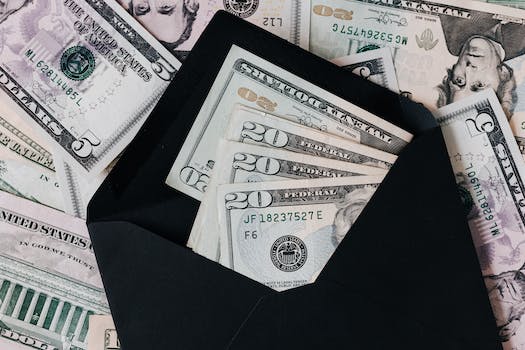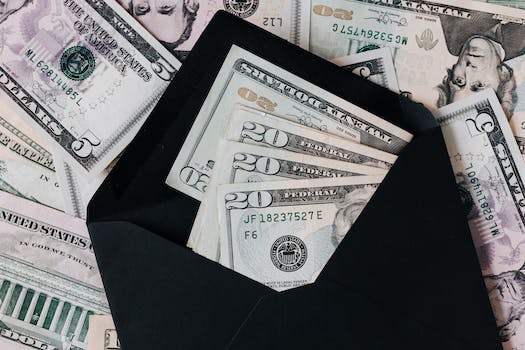How To Save Money On Car Gas Bill
“Fuel your savings with these simple tips for reducing your car’s gas bill.”
Introduction
Saving money on car gas bill is a concern for many car owners. With the rising cost of gas, it is important to find ways to reduce your fuel expenses. In this article, we will discuss some tips on how to save money on car gas bill.
10 Tips for Improving Your Car’s Fuel Efficiency
Are you tired of spending a fortune on gas for your car? With gas prices constantly fluctuating, it can be difficult to budget for this necessary expense. However, there are several ways you can improve your car’s fuel efficiency and save money on your gas bill. Here are 10 tips to get you started:
1. Keep your tires properly inflated. Underinflated tires can decrease your car’s fuel efficiency by up to 3%. Check your tire pressure regularly and inflate them to the recommended level.
2. Use the right motor oil. Using the manufacturer’s recommended motor oil can improve your car’s fuel efficiency by up to 2%. Look for motor oil with the label “Energy Conserving” on it.
3. Remove excess weight from your car. The more weight your car carries, the more fuel it needs to move. Remove any unnecessary items from your car, such as heavy tools or sports equipment.
4. Avoid idling. Idling your car wastes fuel and emits harmful pollutants into the air. If you’re going to be stopped for more than 30 seconds, turn off your engine.
5. Use cruise control. Maintaining a consistent speed can improve your car’s fuel efficiency. Use cruise control on the highway to help you maintain a steady speed.
6. Avoid aggressive driving. Rapid acceleration and hard braking can decrease your car’s fuel efficiency by up to 33%. Drive smoothly and avoid sudden movements.
7. Keep up with regular maintenance. A well-maintained car runs more efficiently. Keep up with regular oil changes, air filter replacements, and tune-ups.
8. Plan your trips. Combining errands into one trip can save you time and money. Plan your route ahead of time to avoid unnecessary driving.
9. Use the right octane level. Using a higher octane level than your car requires won’t improve its performance or fuel efficiency. Stick to the manufacturer’s recommended octane level.
10. Consider carpooling or public transportation. Sharing a ride with others or taking public transportation can save you money on gas and reduce your carbon footprint.
By following these tips, you can improve your car’s fuel efficiency and save money on your gas bill. Remember to keep up with regular maintenance and drive smoothly to get the most out of your car’s fuel economy. With a little effort, you can make a big difference in your wallet and the environment.
The Pros and Cons of Using Gas Rewards Credit Cards

Are you tired of spending a fortune on gas for your car? If so, you may want to consider using a gas rewards credit card. These cards offer cash back or points for every dollar you spend on gas, which can add up to significant savings over time. However, like any financial product, there are pros and cons to using gas rewards credit cards.
Let’s start with the pros. The biggest advantage of using a gas rewards credit card is the savings. Depending on the card, you can earn anywhere from 1% to 5% cash back or points on every dollar you spend on gas. This can add up quickly, especially if you have a long commute or frequently take road trips. Some cards also offer bonus rewards for other categories, such as groceries or dining, which can further increase your savings.
Another benefit of gas rewards credit cards is the convenience. Instead of carrying cash or using a debit card, you can simply swipe your credit card at the pump and earn rewards at the same time. This can be especially helpful if you’re trying to stick to a budget or track your expenses, as you can easily see how much you’re spending on gas each month.
Gas rewards credit cards can also come with additional perks, such as roadside assistance, travel insurance, or extended warranties on purchases. These benefits can vary depending on the card, so be sure to read the fine print before applying.
Now, let’s talk about the cons. The biggest downside of using a gas rewards credit card is the potential for high interest rates and fees. If you carry a balance on your card or make late payments, you could end up paying more in interest charges than you save in rewards. Additionally, some cards may have annual fees or foreign transaction fees, which can eat into your savings.
Another drawback of gas rewards credit cards is the temptation to overspend. If you’re focused solely on earning rewards, you may be more likely to make unnecessary purchases or fill up your tank more often than you need to. This can lead to higher credit card balances and less money in your bank account.
Finally, not all gas stations accept all types of credit cards. If you have a gas rewards credit card that’s only accepted at certain stations, you may have to go out of your way to find a participating location. This can be inconvenient, especially if you’re in a hurry or traveling in an unfamiliar area.
So, should you use a gas rewards credit card? The answer depends on your individual financial situation and spending habits. If you’re able to pay off your balance in full each month and use your card responsibly, the savings and convenience of a gas rewards credit card can be worth it. However, if you tend to carry a balance or overspend, you may be better off sticking with a debit card or cash for your gas purchases.
In conclusion, gas rewards credit cards can be a great way to save money on your car gas bill, but they’re not for everyone. Be sure to weigh the pros and cons before applying for a card, and always use it responsibly to avoid high interest rates and fees. With a little bit of planning and discipline, you can enjoy the benefits of a gas rewards credit card without breaking the bank.
How to Plan Your Route to Save on Gas
Are you tired of spending a fortune on gas every month? With gas prices on the rise, it’s becoming increasingly difficult to keep up with the expenses of owning a car. However, there are ways to save money on your car gas bill without having to give up your vehicle altogether. One of the most effective ways to do this is by planning your route carefully.
Planning your route is a simple yet effective way to save money on gas. By taking the time to plan your route, you can avoid unnecessary detours and reduce the amount of time you spend on the road. This, in turn, will help you save money on gas.
The first step in planning your route is to determine the most direct route to your destination. This may seem obvious, but many people take longer routes without even realizing it. By using a GPS or a map, you can easily find the shortest route to your destination.
Another way to save money on gas is to avoid rush hour traffic. Rush hour traffic can be a nightmare, not only because it’s frustrating, but also because it wastes gas. Sitting in traffic for hours on end can quickly drain your gas tank. To avoid rush hour traffic, try leaving earlier or later than usual. This will not only save you money on gas, but it will also reduce your stress levels.
In addition to avoiding rush hour traffic, you should also try to avoid areas with heavy traffic. Heavy traffic areas, such as downtown areas or shopping districts, can be a major drain on your gas tank. If possible, try to plan your route around these areas. This may mean taking a longer route, but it will ultimately save you money on gas.
Another way to save money on gas is to combine errands. Instead of making multiple trips throughout the day, try to combine all of your errands into one trip. This will not only save you time, but it will also save you money on gas. By combining errands, you can reduce the amount of time you spend on the road, which will ultimately save you money on gas.
Finally, consider carpooling or using public transportation. Carpooling is a great way to save money on gas, as you can split the cost of gas with other passengers. Public transportation is also a great option, as it eliminates the need for a car altogether. While these options may not be feasible for everyone, they are worth considering if you’re looking to save money on gas.
In conclusion, planning your route is a simple yet effective way to save money on gas. By taking the time to plan your route, you can avoid unnecessary detours, reduce the amount of time you spend on the road, and ultimately save money on gas. Whether you’re trying to save money or reduce your carbon footprint, planning your route is a great place to start. So, the next time you’re heading out on the road, take a few minutes to plan your route and see how much money you can save.
The Benefits of Carpooling and Ridesharing
Are you tired of spending a fortune on gas for your car? Do you want to save money while also reducing your carbon footprint? If so, carpooling and ridesharing may be the perfect solution for you.
Carpooling is when two or more people share a ride in one car to get to the same destination. Ridesharing, on the other hand, is when a driver offers a ride to someone going in the same direction in exchange for a fee. Both options have their benefits and can help you save money on your car gas bill.
One of the biggest benefits of carpooling and ridesharing is that you can split the cost of gas with others. This means that you will be paying less for gas than if you were driving alone. Additionally, carpooling and ridesharing can help reduce traffic congestion, which can save you time and reduce stress.
Another benefit of carpooling and ridesharing is that it can help reduce your carbon footprint. By sharing a ride with others, you are reducing the number of cars on the road, which means less pollution and greenhouse gas emissions. This is not only good for the environment, but it can also help improve air quality and reduce the risk of respiratory problems.
Carpooling and ridesharing can also be a great way to meet new people and make new friends. You never know who you might meet on your daily commute, and sharing a ride with someone can be a great way to start a conversation and get to know someone new.
If you are interested in carpooling or ridesharing, there are a few things you can do to get started. First, talk to your coworkers or classmates to see if anyone is interested in sharing a ride with you. You can also check online for carpooling and ridesharing services in your area.
When carpooling or ridesharing, it is important to establish some ground rules to ensure that everyone is on the same page. This may include things like deciding on a pick-up and drop-off location, agreeing on a schedule, and determining how much each person will contribute to the cost of gas.
It is also important to be respectful of your fellow carpoolers or ridesharers. This means being on time, keeping the car clean, and being considerate of others’ schedules and preferences.
In conclusion, carpooling and ridesharing can be a great way to save money on your car gas bill while also reducing your carbon footprint and meeting new people. By sharing a ride with others, you can split the cost of gas, reduce traffic congestion, and improve air quality. So why not give it a try? You might be surprised at how much you enjoy it.
DIY Car Maintenance to Improve Gas Mileage
Are you tired of spending a fortune on gas for your car? With gas prices constantly fluctuating, it can be difficult to keep up with the expenses. However, there are some simple DIY car maintenance tips that can help improve your gas mileage and save you money in the long run.
Firstly, it’s important to keep your tires properly inflated. Underinflated tires can cause your car to work harder, which in turn uses more gas. Check your tire pressure regularly and make sure they are inflated to the recommended level. This can improve your gas mileage by up to 3%.
Another way to improve your gas mileage is to change your air filter regularly. A dirty air filter can restrict airflow to the engine, causing it to work harder and use more gas. Check your owner’s manual for the recommended interval for changing your air filter, but generally, it should be changed every 12,000 to 15,000 miles.
In addition, it’s important to keep your car well-maintained overall. Regular oil changes, tune-ups, and other maintenance tasks can help keep your car running efficiently and improve your gas mileage. A well-maintained car can improve your gas mileage by up to 4%.
Another tip is to avoid idling your car for long periods of time. If you’re waiting for someone or stuck in traffic, turn off your engine instead of letting it idle. Idling can use up to half a gallon of gas per hour, so turning off your engine can save you money in the long run.
Additionally, try to avoid carrying unnecessary weight in your car. The more weight your car carries, the harder it has to work, which uses more gas. Remove any unnecessary items from your car, such as heavy tools or sports equipment, to improve your gas mileage.
Lastly, consider changing your driving habits to improve your gas mileage. Avoid aggressive driving, such as sudden acceleration or hard braking, as this can use up more gas. Instead, try to drive smoothly and maintain a consistent speed. Using cruise control on the highway can also help improve your gas mileage.
In conclusion, there are several simple DIY car maintenance tips that can help improve your gas mileage and save you money on your car gas bill. Keeping your tires properly inflated, changing your air filter regularly, maintaining your car overall, avoiding idling, reducing unnecessary weight, and changing your driving habits can all make a significant difference in your gas mileage. By implementing these tips, you can save money and help the environment by reducing your carbon footprint.
Conclusion
Conclusion: To save money on car gas bill, one can adopt various measures such as driving at a moderate speed, maintaining proper tire pressure, avoiding unnecessary idling, using cruise control, and choosing the right fuel type. These small changes can make a significant difference in reducing the overall fuel consumption and saving money on car gas bills.







